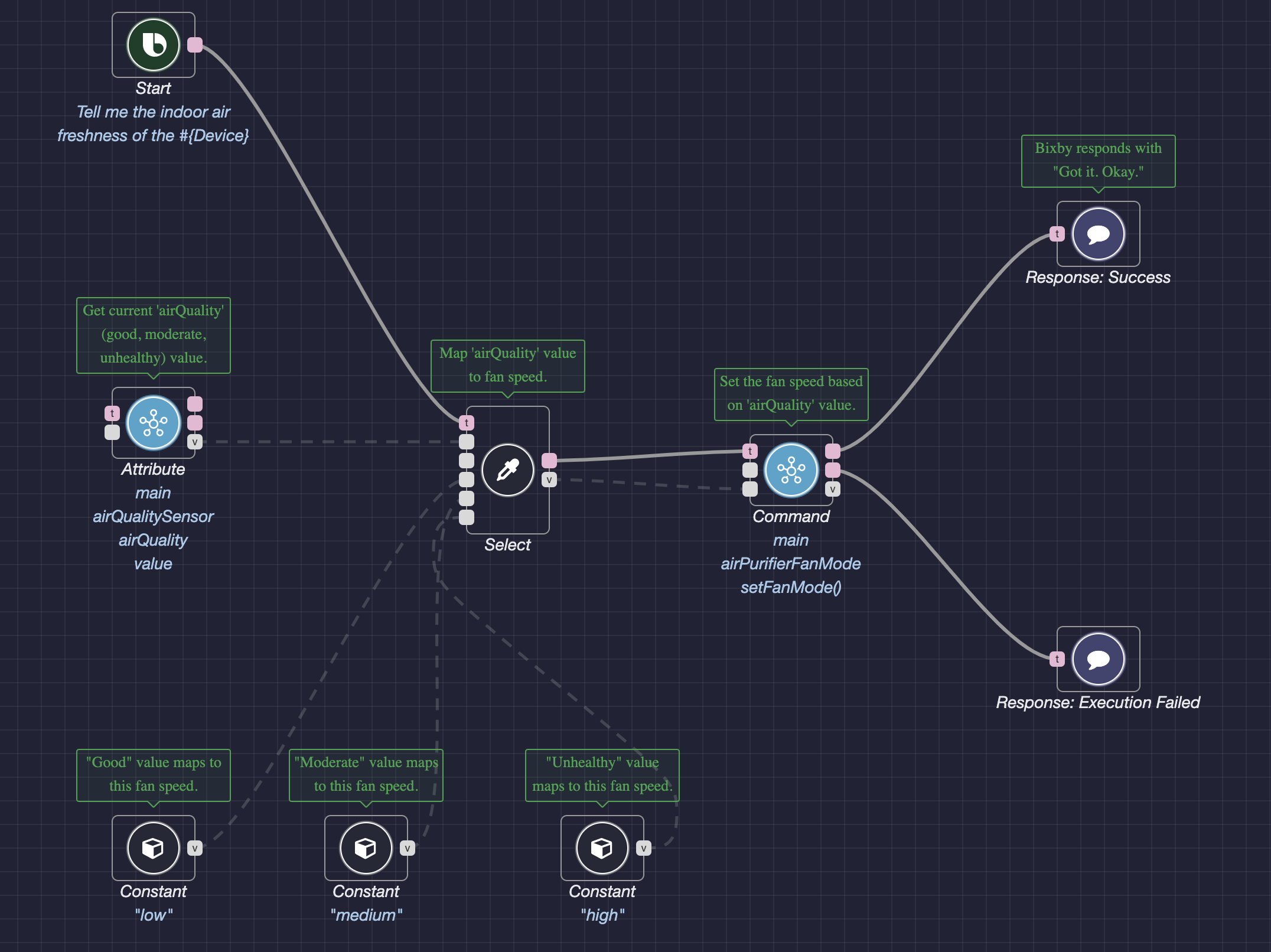Overview
Bixby Home Platform (BHP) at a Glance
With Bixby Home Platform you can enable intelligent voice control on your Internet of Things (IoT) devices using Samsung's virtual personal assistant, Bixby, and the SmartThings IoT platform.
Bixby enables users to control up to 300 million Samsung devices. Bixby also has a capsule platform, where developers can add their own services and apps, giving users more capabilities. SmartThings lets users connect, check, and control various smart home devices installed in their homes. And it isn't limited to just Samsung devices.
BHP integrates Bixby and SmartThings. As a device manufacturer, you can add your own voice-powered capabilities to any SmartThings-compatible device using the Bixby Home Studio (BHS) web-based development environment. You can customize the intelligent voice control experiences for these devices without prior knowledge of coding, Artificial Intelligence (AI), or IoT.
How Does It Work?
Without BHP, controlling a smart device with voice commands can require multiple steps. For example, if a user wants to adjust an air purifier's fan speed depending on the air quality, here's the process:
- The user tells Bixby "Turn on the air purifier."
- Bixby sends an intent through SmartThings to turn on the device.
- The user tells Bixby "Tell me the air quality level."
- The SmartThings device measures the air quality and reports that information back to the user.
- If the air quality is below a certain level, the user asks Bixby "Increase the fan speed."
- SmartThings adjusts the air purifier's fan speed accordingly.
Those are a lot of steps! With BHP, through BHS, a web-based graphical interface tool, you can simplify this process for users.
In BHS, you simply drag and drop nodes to create logical action flows you can export to your device. First, you select the voice capability that you want for your device.
In this case, you would choose the airQualitySensor capability. Bixby is already trained in many supported utterances, such as "Turn on the device."
Use a Start node for the action flow, which gets triggered by a user's utterance. Use a Command node to execute an action on a device and make a decision based on the success or failure of the action. Examples of device actions include increasing the volume, setting the temperature, and changing the channel.
For this example, you might need these additional nodes:
- An
Attributenode to get the value of the capability attribute (good, moderate, or unhealthy) Constantnodes for the various fan modes (low, medium, and high)- A
Selectnode to convert the input value from theAttributenode to a fan speed output - A
Response: Successnode to determine Bixby's response to a successful command - A
Response: Execution Failednode to provide users with responses to failed commands based on the reasons
Then, connect the nodes together in a logical flow.

(Click the image to view a larger version)
With the air purifier example, if the air quality is bad, you can have the fan automatically change its speed to high. That's it! Now when a user asks Bixby about air quality, your SmartThings device adjusts its settings intelligently without the user having to ask.
With BHS, you can also use the Try it simulator to test the action flow on your SmartThings device without having to deploy or host it on the server. And you can make the action flow for a voice capability as simple or complex as you need.
Ready to set up your SmartThings device with Bixby intelligence? Let's get started with our Quick Start Guide!